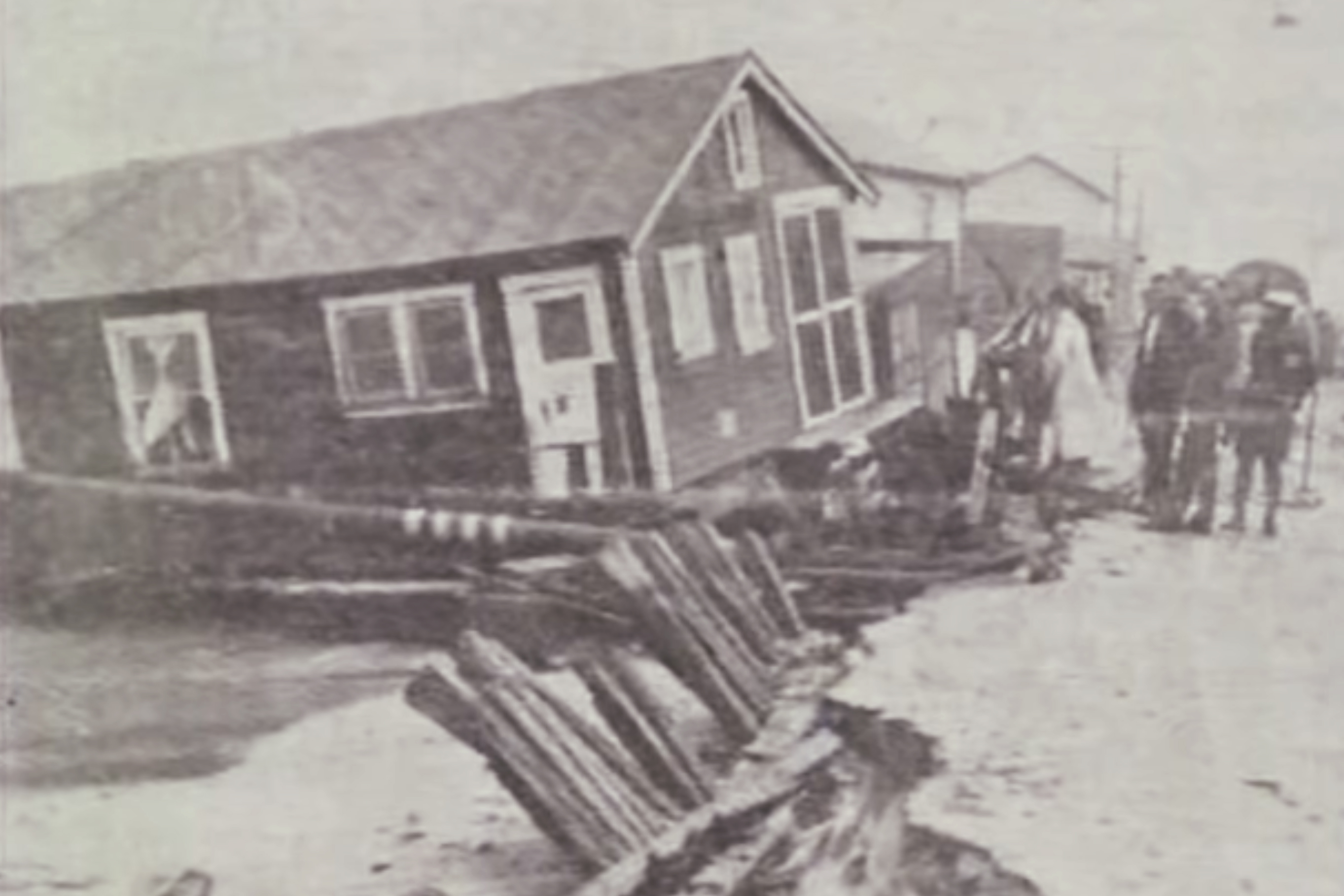California, land of earthquakes, wildfires and even the occasional megaflood, is about to experience a comparatively unusual natural disaster: a hurricane—or, rather, a tropical storm. Hurricane Hilary—currently a Category 4 storm with winds up to 145 mph—is expected to move north along the coast of Baja California and rapidly weaken as it continues over San Diego, with the possibility that it could make landfall in the Golden State late afternoon or early evening Sunday.
Rainfall records are likely to fall across the Mojave and Colorado deserts on Sunday and Monday as the storm dumps as much as 7 inches of precipitation, likely causing intense flash floods. The Coachella Valley could get a year’s worth of rain.
Hilary and its anticipated cone of destruction constitute a very unusual event. The northeastern Pacific Ocean is one of the most fertile places on the globe for birthing hurricanes. But because storms in the Northern Hemisphere generally track west, they typically play out over the vast, uninhabited sea, leaving California untouched.
Cyclones are so rare along the Pacific Coast that only three tropical storms and not a single hurricane have made landfall in California in the 173 years it’s been a state. Still rare, but somewhat more common, is when storm remnants drift north over the Mexican border, as with Hurricane Kathleen in 1976, Hurricane Nora in 1997 or Hurricane Lorena in 2019.
The most recent direct hit was in September 1939, more than a decade before the current naming system was adopted. Known as the Long Beach Tropical Storm—or, more poetically, El Cordonazo, the “Lash of St. Francis”—it was the deadliest in a spate of unusual storms that slammed into California that summer and fall.
Mere weeks after Germany attacked Poland, launching World War II, Los Angeles was in the grips of a heat wave, with triple-digit temperatures recorded for days. Then the rain started, catching people by surprise. Five inches of it fell over many cities, with more than 11 inches on Mount Wilson, near Pasadena.
Downtown LA’s 24-hour rainfall total of 5.56 inches was considerably more than the previous year’s .01 inches for the entire season to that date.
“Twenty-nine Believed to Be Dead as 65-Mile Gale Sweeps Coast,” the front page of the Los Angeles Times read on Sept. 25, 1939. Approximately two dozen of those casualties were on a single fishing boat at Point Mugu, near Oxnard, although the 119-foot tuna boat Star of the Sea survived, its captain saying he’d never encountered anything like 100 mph winds before. Bodies kept washing ashore, and as many as 93 people are estimated to have died.
For its part, the nation’s paper of record regarded these events with cool remove.
“The California gale commands only modest headlines,” the New York Times wrote on page 23. “No one looks for heavy weather on that pleasant stretch of coast.”
But it’s true: Even a freak storm couldn’t dislodge world events from the front pages. The San Pedro News-Pilot on Sept. 26 noted that the U.S. fleet’s training exercises had been delayed by the bad weather, with the main headline informing readers that Warsaw had fallen to the Nazis.
The National Oceanic and Atmospheric Administration, the U.S. meteorological recordkeeper, simply records the deadly events as the “1939 Southern California tropical storm,” with no need to specify it further. Indeed, Pacific hurricanes are typically so inconsequential that their names get recycled over and over, every six years—meaning this is at least the 11th Hilary since 1967. This one, though, is likely to be remembered.
